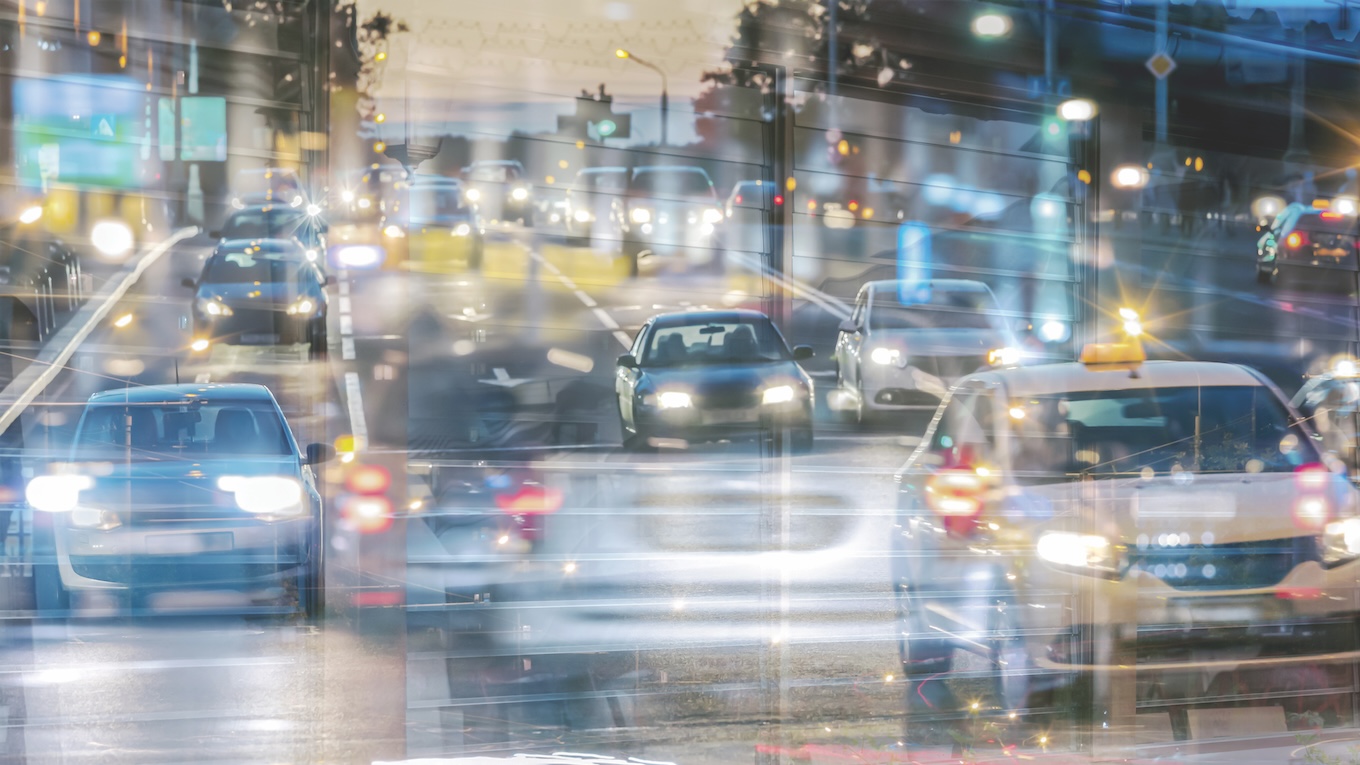 Long exposure of traffic in motion. (iStock.com)
Long exposure of traffic in motion. (iStock.com)Q+A on AI and traffic management
Could environmentally friendly, energy-efficient high-occupancy vehicles (HOVs) become the preferred and quickest mode of transportation? Berkeley Engineering researchers think so. Using a simulated environment, a team — including Smart Cities Research Center director Jane Macfarlane and civil and environmental engineering professor Scott Moura — has created a traffic signal control algorithm that maximizes the throughput of people, rather than vehicles, at intersections. Dubbed HumanLight, the novel technology uses AI to prioritize and reward passengers of HOVs with more green lights.
What led you to HumanLight?
JM: I helped launch OnStar, and we had seat sensors, much like those used with air bags, that would tell us how many people were in the car in the event of an emergency or accident. [I thought] if we have a way of knowing how many people are sitting in those vehicles waiting at a traffic signal, we can develop a traffic signal control system, like HumanLight, that gives priority to those with higher occupancy.
SM: We had this seven-year project called NEXTCAR, where we looked at ways to optimize the speed of the vehicle to reduce energy consumption based on the traffic light timing. As I got deeper into it, I started to wonder, what if we could control traffic light timing? Transportation engineers, meanwhile, were thinking, but how do you control traffic light timing if the vehicle flow is uncontrollable? But what if we could control both?
How does HumanLight fit into the traffic puzzle?
JM: HumanLight is part of the next step in the evolution of transit signal priority and emergency vehicle preemption. Its goal is to optimize traffic signal control for maximum people throughput, not car throughput. Rather than using standard control theory, HumanLight uses an AI technique, reinforcement learning, to manage the dynamic behavior of complex traffic environments.
SM: If you want to move people from point A to point B quickest, it might make sense to actually prioritize the direction that has more people going through. That’s the core idea: to somehow make the traffic light timing intelligent, where it understands the occupancy of the incoming vehicles.
How does this differ from other approaches?
JM: Current transit signal priority systems will prioritize an empty bus because they don’t know how many people are on the bus. They just know the bus is coming. Still, that bus might pick up 50 people on the other side of the light. But HumanLight could potentially provide a clearer picture of vehicle occupancy for multiple modes of transportation, from cars to shuttles and buses, and get more people where they want to go faster.
SM: In the past, there was a technology called adaptive traffic light signal timing. It consists of a network of cameras or magnetic detectors placed along a corridor to detect traffic. But these devices just detect metal boxes, not people. A bus or a shuttle containing 12 people is viewed the same as a Suburban SUV with one person. And so that approach doesn’t make sense when we’re trying to move people. HumanLight not only puts the focus on moving people, but it also provides a framework for bringing together two enabling technologies: connected vehicles and AI.
What has surprised you most about this work?
JM: I didn’t expect to see such good results for people who aren’t in HOVs. After all, you don’t want to design a solution in which people who can’t take a shuttle, for whatever reason, are penalized or must wait an extra half hour to get where they need to go. With HumanLight, we were able to design a democratic solution.
SM: [Lead researcher] Dimitris Vlachogiannis (M.S.’19, Ph.D.’23 CEE) helped us realize another important outcome: incentivizing people to carpool. Initially, I thought of HumanLight as just an infrastructure control solution. But because we’re prioritizing humans, it’s also incentivizing human behavior to carpool and use shuttles and buses.
Learn more: Using AI to get people out of their cars and into HOVs; HumanLight: Incentivizing ridesharing via human-centric deep reinforcement learning in traffic signal control (Transportation Research Part C: Emerging Technologies)
